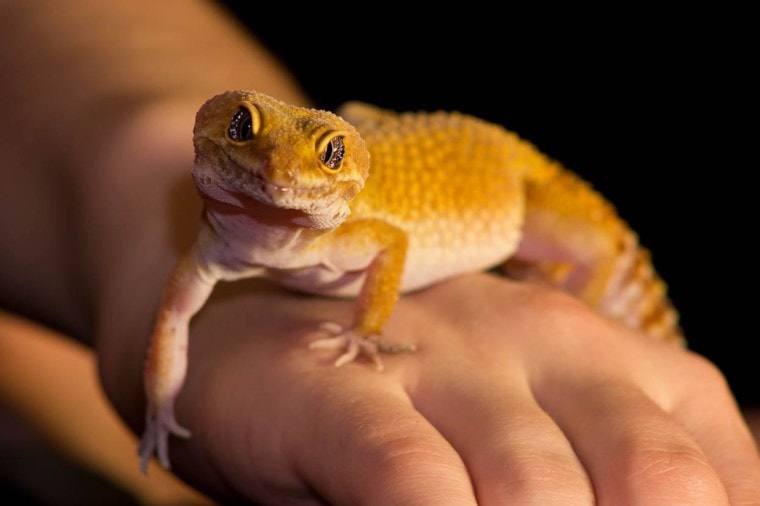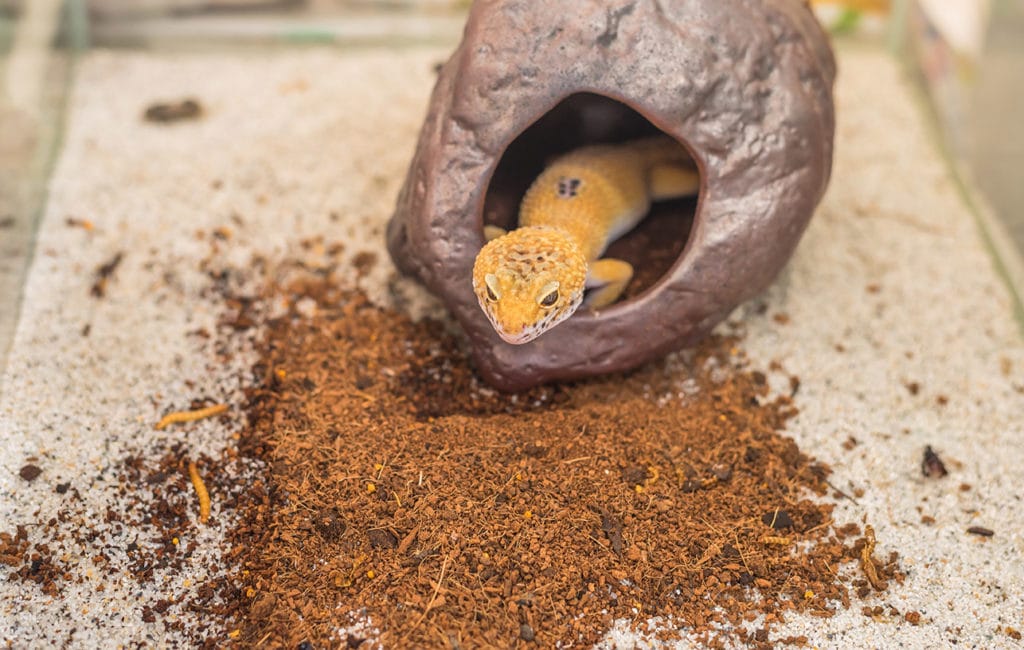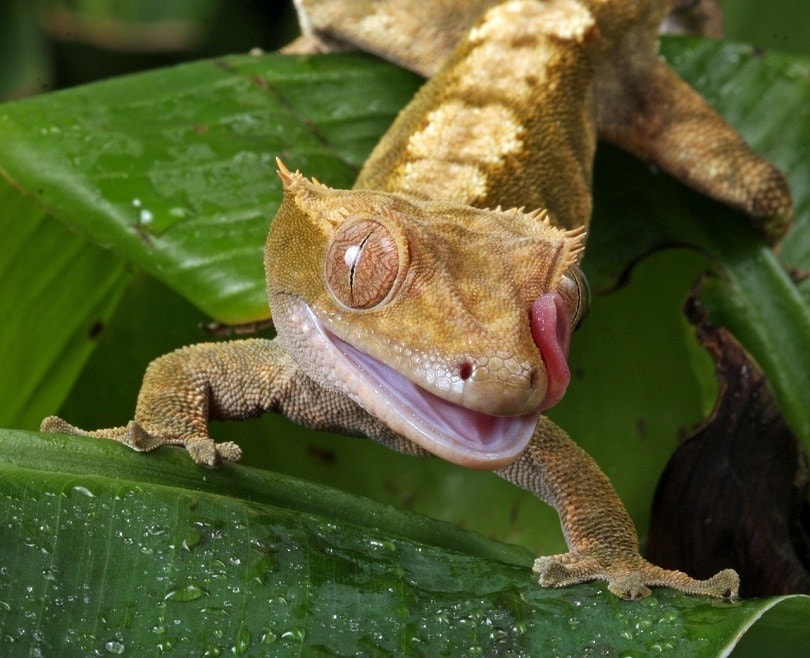
Your spotted friend can generally survive well on its own if you’re only going to be gone for a few days. If your trip is longer than a weekend vacation, you might consider asking a friend or pet sitter to come by and check on your reptile child, giving it water and cleaning out the waste out of its tank.
Although leopard geckos can survive for up to two weeks without food, we don’t recommend going more than three days without feeding your gecko, and your lizard will need water every 24 hours.
But sometimes human friends and sitters just can’t be found, or maybe you’re relocating somewhere far away. During times like these, you may need to bring your gecko with you. While your lizard would prefer to stay at home, they’ll likely tolerate a short trip (less than three travel days) if you take these precautions to ensure they have a safe and stress-free drive.
The 7 Travel Tips for Your Leopard Gecko
Similar to their cat enemies, leopard geckos don’t like changes in their environment. Car rides, moves, and new carriers stress them out, so optimally you don’t travel with your gecko unless there’s no other option. However, for the times you must take them with you on the road, we recommend finding them a smaller temporary carrier instead of transporting them in their tank.
It’s actually quite dangerous to take your lizard on a car ride in their tank because they’re not secured. A sudden turn can send them reeling to the other side or knock over their scenery such as rocks and plants, potentially crushing them. To avoid this, you’ll need to put them in a special travel container that’s much smaller than their normal tank. Deli containers, plastic food storage boxes, or even cardboard cat carriers like the ones from the animal shelter will work. Just remember to punch some air holes so your friend doesn’t suffocate. Here are some additional tips for traveling with a leopard gecko.
1. Acclimate Them Before You Go
In the days leading up to your adventure, let your lizard spend a few minutes daily exploring their carrier. This will help them grow comfortable in their new environment, which will eliminate one stressful factor of their travel day. You might even want to take them on a short car ride so they know what to expect, instead of letting them experience their first motorized trip on a ride stretching several hours long.

2. Stick to the Road
The fewer stops the better. Ideally, you should reach your location in 24 hours or less. Otherwise, you have to give them water, which you don’t want to do because leopard geckos can actually get car sick. It’s recommended that you withhold their food from them for a couple of days before traveling to help them feel better during the ride. However, if your trip lasts for longer than a day, you must at least spritz them with water, and they’ll need food after three days.
3. Consider Their Ears
Although they can’t hear as well as humans, geckos won’t appreciate loud music bumping on the radio. They’re probably stressed out as it is, so other unfamiliar stimuli won’t help their situation.

4. Limit Their Exposure to Stressful Stimuli
If traveling for more than 24 hours, some gecko parents return their lizard to its enclosure for the night when they stop at the hotel. However, this isn’t necessarily a great idea because it may stress them out further when you pack up and leave again in the morning. Some geckos dislike traveling in clear containers where they can see their environments, so you can always fix this problem by covering their temporary shuttle with a loose-fitting towel or an insulating container such as a cooler.
5. Notice the Temperature
Geckos thrive when the temperature is above 65ºF and under 85ºF. They also prefer warm, humid climates, but don’t need to be in the direct sunlight for long periods of time. Keeping this in mind, you may have to take extra precautions when transporting your gecko during cold or extremely hot weather.
Never place them directly under the AC, as that’ll be too cold, and keep them in a hard-sided cooler or insulated bag if it’s over 90ºF outside. You can use an ice pack or a warmer on low to regulate their ambient temperature but keep it off to the side of their carrier instead of placing it directly under or above them because the harsh temperature changes can kill them. Ideally, you’ll avoid extreme temperatures with your gecko entirely. The environment should mimic their home.

6. Secure Their Carrier
Both their temporary holding unit and their cage should be strapped to the seat or otherwise contained. The passenger floor is a great place for them to travel so that you can check on them often, and they won’t get knocked off the chair if you have to slam on the brakes.
7. Introduce Them to Their New Environment Slowly
Whenever you arrive at your travel destination, you might not want to let them out right away. Instead, slowly let them see where they are before letting them climb out and explore. If your gecko is feeling a little timid, be patient. It might take some time for them to get acclimated to their new place, but they’re more likely to feel at ease if they’re not forced or rushed.

Conclusion
It’s possible to travel with your leopard gecko, although not ideal. If your reptilian buddy is riding with you, make sure they’re outfitted with the appropriate travel accommodations such as a smaller carrier that’s secured in a cooler or on the floor, so it doesn’t tip over. To put your lizard at ease, limit stressors such as external stimuli and extreme temperatures, especially anything colder than 65ºF. Driving safely will help them not feel like they’re on a wild ride, but you should also arrive at your destination without unnecessary stops so that you can hold off on their food and water until you’re situated. These steps will help prevent car sickness and accidents and let your lizard enjoy the ride.
Also see:
Featured Image Credit: Svetlanistaya, Shutterstock








